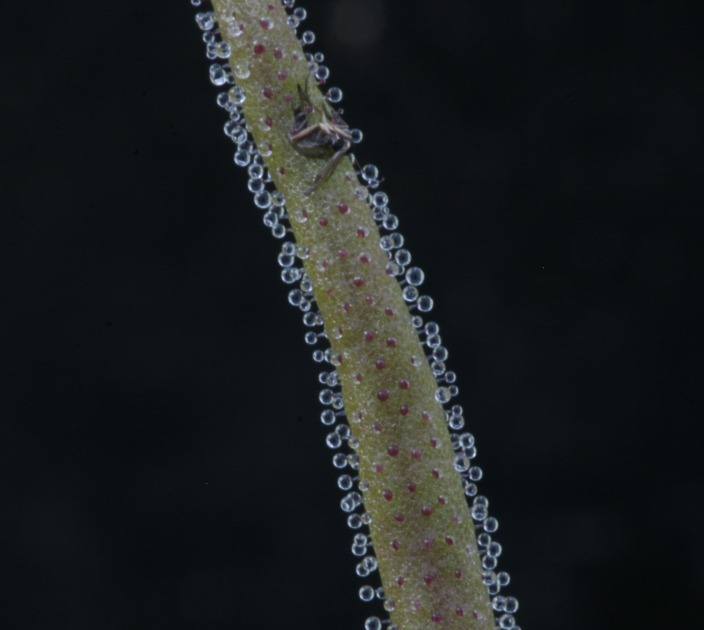
Oliver Gluch's World of Carnivorous Plants or: "What you always wanted to know about butterworts" |
| Impressum |

| Home | Origin | Prey | Species | Plant Purchase | Other Carnivorous Plants | Info about Carnivorous Plants | About me |
Which insects do butterworts catch?Generally the passive trapping mechanisms of butterworts are only able to catch small insects. Larger and stronger prey, like ants or aphids, can free themselves from the sticky mucilage. Smaller insects, like whiteflies or 'mushroom' flies, are the preferred prey. But sometimes even big insects with large wings are not able to escape when a large part of the wings get in contact with the deadly mucilage.
The enzymes, secreted by the sessile glands, transform chemically the prey into nutrients, essential for the plant growth, especially nitrogenous and phosphate containing compounds. The non-digestible parts of the prey remain on the surface of the leaves and come back into the nutrient cycle together with the old, decaying leaves of the butterworts. Some butterwort species are even able to move their leaves when an insect is caught. Triggered by the prey's movements, the leaf margin curls up, forming a bowl. On one hand this movement enlarges the surface that glands can act on digesting the insect. On the other hand the mucilage containing the enzymes are protected against getting washed away by rain. |
